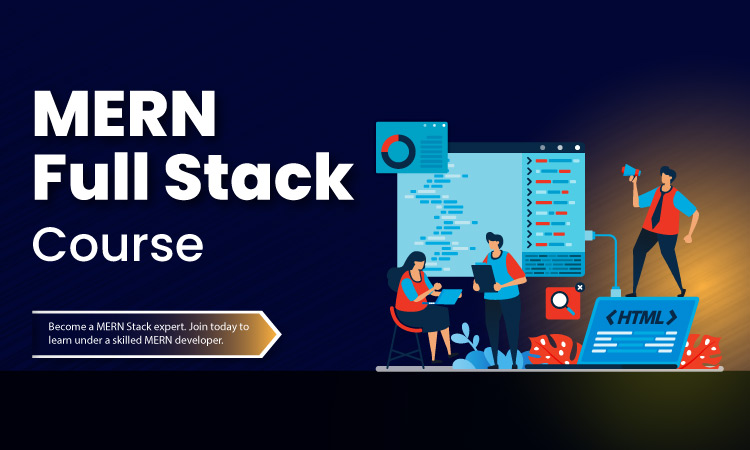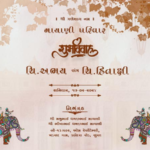Introduction
Creating a chat application using the MERN stack—MongoDB, Express.js, React, and Node.js—combines powerful technologies for both backend and frontend development. This stack allows for real-time messaging capabilities, scalable data handling with MongoDB, and a responsive user interface through React components. Consider investing in the Best MERN Stack Course for the best skill development. By leveraging these technologies, developers can build modern, efficient chat applications that meet the demands of today’s interactive web environments.
Creating A Chat App Using MERN Stack
Creating a chat application using the MERN stack (MongoDB, Express.js, React, Node.js) involves several steps, from setting up the backend server to building the frontend interface and enabling real-time communication using WebSockets. Aspiring Mern Stack Developer can follow the below guide to create a brilliant chat app using MERN.
1. Setting Up the Backend
- Ø Initializing the Project
Start by setting up a new Node.js project. Initialize it with npm to create a package.json file.
- Ø Installing Dependencies
Install the necessary packages: Express for the server framework, Mongoose for MongoDB interactions, and Socket.io for real-time communication.
“npm install express mongoose socket.io”
- Ø Creating the Server
Create a new file, server.js, to configure your Express server. Set up basic routes and integrate Socket.io for handling WebSocket connections.
- Ø Connecting to MongoDB
Use Mongoose to connect to your MongoDB database. Define schemas and models for storing user data and chat messages.
- Ø Handling Real-Time Communication
Set up Socket.io to listen for connection events. Implement event handlers for actions like joining a chat room, sending messages, and broadcasting messages to all connected clients.
2. Setting Up the Frontend
- Ø Initializing the React App
Create a new React application using Create React App or any other preferred method.
- Ø Installing Dependencies
Install the necessary packages: Axios for making HTTP requests, Socket.io-client for WebSocket communication, and any state management library like Redux if needed.
“npm install axios socket.io-client”
- Ø Creating Components
Structure your application with components for the chat interface. Typical components might include a ChatRoom, MessageList, and MessageInput.
- Ø Establishing WebSocket Connection
Use the Socket.io-client library to connect to the backend WebSocket server. Handle events for receiving and sending messages within the appropriate components.
- Ø Displaying Messages
Implement functionality to display incoming messages in real-time. Use state management to update the message list as new messages arrive.
3. Integrating Backend and Frontend
- Ø User Authentication
Set up user authentication to ensure that only registered users can access the chat application. This might involve creating a user registration and login system using JWT (JSON Web Tokens) for authentication. Consider investing in the Best MERN Stack Course for the best guidance.
- Ø Chat Room Management
Implement functionality for creating and joining chat rooms. Manage the list of active chat rooms on both the server and client sides.
- Ø Persisting Messages
Ensure that chat messages are saved to the MongoDB database. On the client side, fetch and display the message history when a user joins a chat room.
- Ø Real-Time Updates
Leverage Socket.io to handle real-time updates. Emit events for user actions like sending a message, and listen for these events on the client side to update the UI accordingly.
4. Final Steps and Deployment
- Ø Testing
Thoroughly test your application to ensure all features work as expected. Test the WebSocket communication, user authentication, message persistence, and UI responsiveness.
- Ø Optimization
Optimize your application for performance. This might include minimizing bundle size, optimizing database queries, and ensuring efficient WebSocket communication.
- Ø Deployment
Deploy your application. For the backend, consider using a service like Heroku or DigitalOcean. For the frontend, deploy using services like Netlify or Vercel. Ensure your MongoDB instance is accessible and secure.
- Ø Security
Implement security best practices, such as validating user inputs, securing WebSocket connections, and protecting against common vulnerabilities like XSS and CSRF.
Thus, Building a chat application using the MERN stack involves setting up a backend server with Express and MongoDB, creating a frontend with React, and enabling real-time communication with Socket.io. The key steps include initializing the project, connecting to the database, handling WebSocket events, creating React components, and integrating the backend and frontend. Finally, thorough testing, optimization, and deployment are essential to ensure a smooth and secure user experience.
By following these steps, you can create a robust and scalable chat application that leverages the power of the MERN stack for efficient development and real-time communication.
Conclusion
To summarise, developing a chat application with the MERN stack involves setting up a robust backend with Node.js, Express, and MongoDB for data storage, integrating real-time communication using Socket.IO, and building a dynamic frontend with React. Aspiring Mern Stack Developer can join a training program for the best guidance in this field. This stack enables scalable, efficient, and interactive chat experiences tailored to modern web applications.



